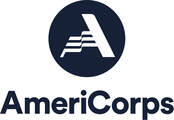|
By Danielle Preservation Alliance of West has begun to implement a new program entitled the Buildings At Risk Register featuring historic buildings in West Virginia facing risk of being demolished from neglect, vandalism, owner seeking demolition, or environmental factors. The Creel (or Cain) House in St Marys, Pleasants County, and Top O Rock in Charleston, Kanawha County were approved for this listing in March 2015. The Creel House is being listed after the owner filed a demolition permit, and Top O Rock is listed to highlight an adaptive re-use design competition for the severely vandalized Modernist structure.
The new Buildings At Risk Register will be used to bring attention to at-risk historical resources that may be lost and efforts to save these special places. “The purpose of the register is to demonstrate that these places matter to West Virginians and there is interest in saving them. It will also be an educational tool about the preservation of historic properties all over the state,” explained Danielle LaPresta, executive director for the alliance. The alliance launched this program in February and has received multiple submissions in only a few weeks. The register will serve as a watch list for individuals wanting to know the status of historical resources in West Virginia. Submissions are accepted on a rolling basis and are reviewed once a month by a committee comprised of members of the alliance’s board of directors and staff. The alliance will maintain close contact with persons submitting at risk site applications for advocacy purposes. For a full list of sites on the register, visit https://preservationallliancewv.wordpress.com/b-a-r-r/sites-on-the-buildings-at-risk-register/. Learn more at http://www.pawv.org or by calling 304-345-6005.
Every hand helps. This Saturday, March 28th, 2015, lend us your hand in preserving our nation’s hallowed ground.Rich Mountain Battlefield Foundation, in coordination with the Civil War Trust, will be leading a community-wide cleanup of the Rich Mountain Battlefield. Tools and water will be provided. Meet on the mountain at 10 am.
We hope to see you there! For more information on Park Day nationwide: http://www.civilwar.org/aboutus/news/news-releases/2015-news/national-park-day-event-2015.html The Downtown Beckley Business Association will host a tax credit workshop on March 26, the first in a series of economic development programs designed to help downtown property owners prepare for a possible investment by West Virginia University.
Jennifer Brennan, a tax credit coordinator for the State Historic Preservation Office, will advise property owners in the downtown historic district on how best to manage the pursuit of tax credits, which can offset up to 30 percent of the cost of renovations. Jim Chambers, a property owner and spokesman for the association, said investors in the downtown are increasingly excited about the availability of funding and support for development. “Property owners are beginning to have a clear vision of the value of being in a historic district, especially in light of the possible investment from WVU,” Chambers said. “New staircases, elevators, fire escapes — these are the kinds of construction incentives we’ll need to make the best use of our buildings, and the funding is available, thanks to our location in a national historic district.” Chambers said that only property owners in national historic districts, or those who own nationally historic properties, are eligible for the credit. Ten percent of the credit is managed through the state government; 20 percent is managed through the federal, he said. The state also offers grants for the restoration, rehabilitation, and repair of historic properties, he said, and the association will soon also present a program on grants. According to the National Park Service, the tax credits can be used to help cover the cost of the repair or installation of walls, doors, stairs, floors, windows, ceilings, chimneys, escalators, elevators, partitions, plumbing, fire escapes, electrical wiring, sprinkler systems, heating and central air conditioning systems and other components related to the operation and maintenance of properties. Chambers said an architect will address the meeting of the association on March 9 to help advise property owners on the adaption of their buildings for activities associated with the university. In an interview earlier this month with the Charleston Gazette, Rob Alsop, WVU’s vice president for legal, government and entrepreneurial engagement, said that the university expected to complete its purchased of the former Mountain State University campus in downtown Beckley this month. Chambers said the purchase would make WVU one of the largest landowners in the Beckley Courthouse Square National Historic District. The tax credit meeting has been scheduled for 5 :15 p.m. at the Tickity Boo Mercantile at 337 Neville Street. The meeting will be free and open to the public. For more information on the meeting or the association, contact Jim Chambers at 304-573-4332 or David Sibray at 304-575-7390. For more information on tax incentives for historic properties, visit: http://www.nps.gov/tps/tax-incentives.htm The Kickstarter campaign to raise $25,000 toward the restoration of the Blue Sulphur Spring Pavilion continues to move forward. As of Monday, March 16, 2015, more than 70 individual backers, champions all, have pledged nearly half of the goal. While the fund raising is moving forward, time is getting short since the campaign ends at 4:00 p.m. on Saturday, March 28.
Chair of the Friends of the Blue, Alex McLaughlin said, “We all have this great fascination, desire and belief that the Blue is worth saving, but the stabilization and restoration of the Blue is not automatic. The Blue will not stabilize itself or restore itself. Only we can do that through our donations and efforts to get others to contribute.” One person who has made a significant effort is Karen Lee McClung. She has stepped up to help the cause by creating a beautiful watercolor rendering of the Blue. A print of her watercolor is available for a pledge at the $75 level and at the $100 level a backer will receive a small pin representation of the Blue and a print and 5 note cards featuring McClung’s work. McLaughlin said, “Let this be our inspiration to walk the extra mile to turn our fascination, desire and belief that saving the Blue is worthwhile into a reality. We are the Champions of the Blue and we can make this happen.” Everyone is encouraged to support the Blue by going to https://www.kickstarter.com/projects/693916700/restore-the-blue-sulphur-spring-pavilion and making a pledge using a credit card. Kickstarter is a crowdfunding mechanism which uses the reach of the internet to give donors a safe way to back a project. It is an all-or-nothing approach where the project receives no funds if the goal is not met. Donors “pledge” using their credit card and the amount is only deducted if the full amount of the goal is pledged. Because the Greenbrier Historical Society is a 501 c 3 organization, pledges are deductible from federal taxes in accordance with the law. VOLUNTEERS NEEDED: THE HELEN APARTMENT CLEAN-UP DAY HAS BEEN SCHEDULED FOR APRIL 11TH 20153/17/2015
We GROw, Inc. (Winding Gulf Restoration Organization), the non-profit organization for the Helen community of Raleigh County, is in the process of obtaining a historic property. An apartment building dating to the 1920’s represents Helen’s role in the heyday of coal mining. Helen remains one of the last surviving intact coal communities of the Winding Gulf Coalfield. The apartment building is a historic staple of the community, and once restored it can potentially be an important resource for community and the public. Helen is situated along the Coal Heritage Highway – a project of the National Coal Heritage Area Authority.
On April 11th volunteers will come together to clean the building of debris. Volunteers will also help to architecturally mothball the structure to protect it from vandalism and the weather. The Planned activities will make a big impact on the community by preventing vandalism and improving its visual appearance. The project is a collaboration of We GROw, The Preservation Alliance of West Virginia (PAWV), National Coal Heritage Area Authority, The West Virginia Department of Environmental Protection, The Raleigh County Commission, and The Raleigh County Office – West Virginia State University Extension Service We GROw, a fully registered 501 (c) 3 non-profit organization, was founded in 2004 and has accomplished many positive outcomes in the community; including development of a park and the installation of a Coal Miner’s Memorial. Cleaning and boarding up this building is their next improvement effort. You can find more information about WeGROw on their Facebook page at https://www.facebook.com/WeGROwWV . Two Preserve West Virginia AmeriCorps (PAWV) members Tiffany Rakotz and Nicole Marrocco have been working to organize volunteers and logistics for the project. To learn more about The Preservation Alliance of West Virginia visit their website at http://www.pawv.org/ To volunteer or ask questions please contact Preserve WV AmeriCorps Member Tiffany Rakotz at (734) 787-6784 or [email protected]
Plans call for returning the first floor storefront to its original design, which included large display windows and transom windows, Birchfield said, and approaching the treatment of a side wall left exposed after a fire destroyed a neighboring building in 2003.
“We’re really excited about how dramatic but affordable the restoration will be,” she said. “Grants and tax credits for historic properties offset the cost, but the cost of peeling off the later-built facade and fixing back the original isn’t exorbitant.” “We know from restoration work we’ve experienced in Lewisburg’s historic district that there’s a good reason to restore: it’s efficient and it’s beautiful.” Birchfield said she hopes to submit the plan to the Beckley Historic Landmarks Commission as soon as the state has approved funding. Owners of historic properties in national historic districts in West Virginia are eligible for grants and tax credits of up to 30 percent for the restoration of their buildings to U.S. Department of the Interior standards. A founding member of the Downtown Beckley Business Association, Birchfield said she encourages the city to continue to strengthen and enforce its architectural review process, which she says secures her investment in the national historic district. Birchfield is one of several property owners now pursuing grants and tax credits to support restoration in the district, according to Dave Sibray, a spokesmen for the business association. “We’re working with two other investors in the district who plan to invest in restoration this year,” Sibray said. The area of Blue Sulphur where the Blue Sulphur Spring Pavilion is located is also the birthplace of “Traveller” the famous war horse of General Robert E Lee. These days, Traveller would not be the only one kicking up his heels. The Friends of the Blue Committee of the Greenbrier Historical Society is pretty excited too.
The Kickstarter campaign to raise $25,000 is kicking up its heels. As of Monday, March 9, 2015, forty-eight individual backers, champions all, have pledged more than $6000 toward the effort. Chair of the Friends of the Blue Committee, Alex Mclaughlin said, “Folks, we are so gratified and appreciative of the overwhelming support for our Kickstarter campaign. With about 18 days left, we have raised over $6000 of the needed $25,000 and almost $10,000 in total contributions. Now, we need about 600 new ‘Champions for the Blue’ to donate at least $25 to meet our goal by March 28. Every donor of $25 or more gets a neat little pin and a really huge ‘thank you’ from all those generations to come that will be able to visit the Blue”. Everyone is encouraged to support the Blue by going to https://www.kickstarter.com/projects/693916700/restore-the-blue-sulphur-spring-pavilion and making a pledge using a credit card. Kickstarter is a crowdfunding mechanism which uses the reach of the internet to give donors a safe way to back a project. It is an all-or-nothing approach where the project receives no funds if the goal is not met. Donors “pledge” using their credit card and the amount is only deducted if the full amount of the goal is pledged. Because the Greenbrier Historical Society is a 501 c 3 organization, pledges are deductible from federal taxes in accordance with the law. McLaughlin said, “We are excited to have this little pin to give to our donors. This is the first known pin representation of the Blue and a great way to tell the world you were a part of the first official fundraising campaign for its restoration. Please contribute and spread the word. Together, we WILL Save the Blue.”
According to the competition website, the contest offers an opportunity for individuals, teams of design industry or non-industry professionals, emerging professionals, students, or community development nonprofits to explore plans that include historic preservation, adaptive and sustainable land reuse for public benefit, business or education innovation. The Top O Rock: Spirit of Reinvention design competition sponsors include WVSU Extension’s Economic Development Center, Kanawha Valley Historical and Preservation Society, and CWest Properties, LLC. Supporters include: City of Charleston, Historic Landmarks Commission, Preservation Alliance of WV, West Virginia Foundation for Architecture, US Green Building Council-WV, and Create West Virginia.
“Basically, we’re looking for bright ideas that are financially feasible,” says Sarah Halstead, the West Virginia State University sustainable economic and community development specialist who has spearheaded the drive to save the building. “Ever since Top O Rock became prominently visible in Charleston, in the late 1960s, it has been talked about, written about in national and international publications, visited, admired, and has often been at the center controversy because of Elden’s daring vision,” Halstead explains. The iconic residence and design studio was purchased several years ago by a private investor who has entertained several different business ideas for future use, however, like mid-century modernist structures around the world, much work is required to restore the building and bring it up to code. “Many modernist structures are facing the wrecking ball at this moment. We have a rare opportunity to work with the property owner to call for innovative ideas, including business models supporting the preservation of the building and the surrounding 13 acres of wooded land, just minutes from downtown. Yes, the building was vandalized, but the vandalism is not a deal breaker. Remember, this is a concrete, steel and glass structure. It’s tough. International experts agree that Top O Rock is a significant example of modernist architecture that should absolutely be restored,” Halstead says. With the permission and assistance of the property owner, she has marshaled the energies of architects, students, business people and historic preservationists to save the building. “It’s surprising to many that the building has come close to destruction, but it’s actually not an unusual situation. The public is only beginning to understand the importance of modernist architecture around the world. This is a great opportunity to raise local awareness of our own architectural and cultural treasures. They define us, and our places.” The design competition will close on May 8, 2015. Judges include Christine Madrid-French, expert member of the scientific committee on 20th Century Heritage for the International Council on Monuments and Sites (ICOMOS), and Peter Aeschbacher of Penn State Stuckeman School of Architecture. Peter is also the director of design at Penn State’s Hamer Center for Community Design. Local judges will be announced, along with additional events related to the competition. There is a series of short talks on related subjects scheduled for Tuesdays at noon throughout the months of March and April. An online fundraising campaign is underway, offering a variety of ways individuals and organizations can support this preservation and community design effort. A virtual tour of the property will live stream on Monday, March 9, 2015 and will be archived for viewing throughout the competition. Additional information will be added to both the TopORockwv.com website and Facebook.com/TopORockwv page on an ongoing basis. For complete information, visit the competition website, which includes a comprehensive calendar. As Appalachian Forest Heritage Area continues to work with West Virginia Congressional delegations to seek National Heritage Area designation for Appalachian Forest National Heritage Area, they need to show widespread support. You can show your support by a support letter to AFHA, and/or by contacting your Congressional offices directly.
Contact Your Representatives Directly contact your representatives. Call their DC office and leave a message, or email through their web site contact. You can also contact their in-state staff and share this message as well. Contact your Congressman to thank them for their sponsorship of HR 693 to designate Appalachian Forest National Heritage Area, and encourage them to also support HR 581 the National Heritage Area Program bill. Congressman David McKinley, WV 1st https://mckinleyforms.house.gov/email-me 202-225-4172 Congressman Alex Mooney, WV 2nd https://mooney.house.gov/contact 202-225-2711 Congressman Evan Jenkins, WV 3rd https://evanjenkins.house.gov/contact (202) 225-3452 Congressman John Delaney, MD 6th District http://delaney.house.gov/contact/email-me 202-225-2721 Contact your Senator’s office to thank them for their support, and encourage them to again sponsor a Senate bill to designate Appalachian Forest National Heritage Area. Encourage them to also support a bill to establish a National Heritage Area Program. Sen. Joe Manchin http://www.manchin.senate.gov/public/index.cfm/contact 202-224-3954 Sen. Shelley Moore Capito http://www.capito.senate.gov/content/contact-shelley 202-224-6472 Sen. Ben Cardin http://www.cardin.senate.gov/contact/ 202-224-4524 Sen. Barbara Mikulski http://www.mikulski.senate.gov/contact/ 202-224-4654 Please drop an email to phyllisb@appalachianforest.us to let us know the contacts you’ve made, and if you get a response. Write AFHA Support Letter You or your organization can show your support by sending a support letter or resolution directly to AFHA. Then we can share it with our representatives to show our widespread support. If you previously wrote a letter, you can write a new one that indicates renewed support, or discusses progress that AFHA has made since our initial round of letters in 2004 – 2006. We also are seeking letters that support the National Heritage Area Program and passage of a NHA Program Bill. Success with this bill will make passage of the AFNHA bill much more likely. For general support letter or resolution, please include the following sentiments: I/we support National Heritage Area designation for the Appalachian Forest Heritage Area Also acceptable, although not as strong a statement, is: I/we support national recognition of the significance of our forest region (or of our forest heritage assets.) Address it to: Appalachian Forest Heritage Area Board, PO Box 1206, Elkins WV 26241 If you email it, pdf is preferred with an original signature. Send to phyllisb@appalachianforest.us Letter content, samples, talking points: The letter can talk about your own organization if you want, and how AFHA has benefited or will benefit your work. It can include ways you expect to be involved or support AFHA. Some additional talking points follow – just pick what applies to you, and feel free to rephrase it if you want. The letter can be short (preferably keep to one page) – but best in your own words. It doesn’t matter so much what you say, but more that fact that you have made the effort to write. Talking Points – AFHA:
Talking Points – NHA Program Bill:
Sample organizational letters can be found at the AFHA website. Sample organization letter ys you expect to be involved or support AFHA. Some additional talking points follow – just pick what applies to you, and feel free to rephrase it if you want. The letter can be short (preferably keep to one page) – but best in your own words. It doesn’t matter so much what you say, but more that fact that you have made the effort to write. A bill to designate the Appalachian Forest National Heritage Area was introduced in the U.S. House of Representatives on February 3. HR 693 was introduced by Congressman David McKinley (WV-1) with co-sponsorship from Congressmen Evan Jenkins (WV-3), Alex Mooney (WV-2) and John Delaney (MD-6). The area is made up of 18 counties in the Appalachian highlands that reach into all three West Virginia districts and western Maryland.
Designation as a National Heritage Area will bring recognition of the national significance of the area, marketing and technical assistance from the National Park Service, and potential matching funds for Heritage Area local projects. There are currently 49 National Heritage Areas across the country, each designated by Congress as places where natural, cultural and historic resources combine to form a cohesive, nationally important landscape. National Heritage Areas provide a grassroots, community-driven approach to heritage conservation and economic development. “West Virginia’s abundant natural resources include its scenic landscapes, forests, touring areas, historic sites, and fishing and hunting spaces,” said Congressman McKinley. “The Heritage Area designation will recognize these unique places while ensuring the local community has control and safe and productive use can continue. This legislation addresses the concerns of many in West Virginia and throughout the region and we will continue to build support for it.” Appalachian Forest Heritage Area has been working for more than twelve years to recognize, improve, and promote the forest heritage of the highlands of West Virginia and western Maryland. “Our accomplishments include wide-ranging partnerships, conservation improvements, heritage tourism development, and interpretation about our forest heritage,” said Phyllis Baxter, Executive Director. “We are thrilled that our Congressmen sponsored this bill to bring national recognition of our forest heritage and more opportunities for our communities.” Recent projects of the Appalachian Forest Heritage Area include the Appalachian Forest Discovery Center in the Darden Mill in Elkins, featuring forest heritage displays and information about sites to visit around the region. Conservation projects have included tree plantings and efforts to control non-native invasive species. The AFHA AmeriCorps program places AmeriCorps members at sub-sponsor sites to provide direct service to improve communities and the environment. Appalachian Forest Heritage Area works only with willing partners and welcomes participation from individual, organization, and business members. For more information see www.appalachianforest.us, email [email protected], or call 304-636-6182. |
News and NotesCategories
All
Archives
May 2024
Subscribe to our mailing list to receive e-news updates on historic preservation news and events in West Virginia.
|
Get Involved |
Programs |
Contact UsPreservation Alliance of West Virginia
421 Davis Avenue, #4 | Elkins, WV 26241 Email: [email protected] Phone: 304-345-6005 |
Organizational Partners:
© COPYRIGHT 2022 - PRESERVATION ALLIANCE OF WEST VIRGINIA. ALL RIGHTS RESERVED.

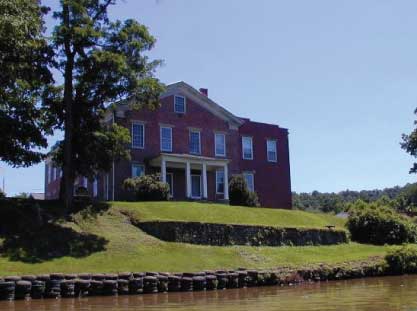
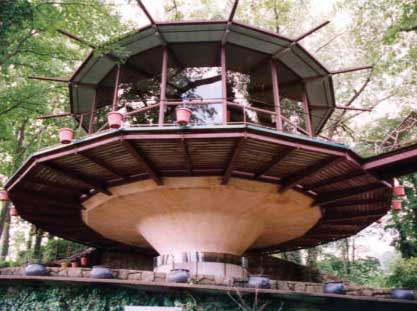
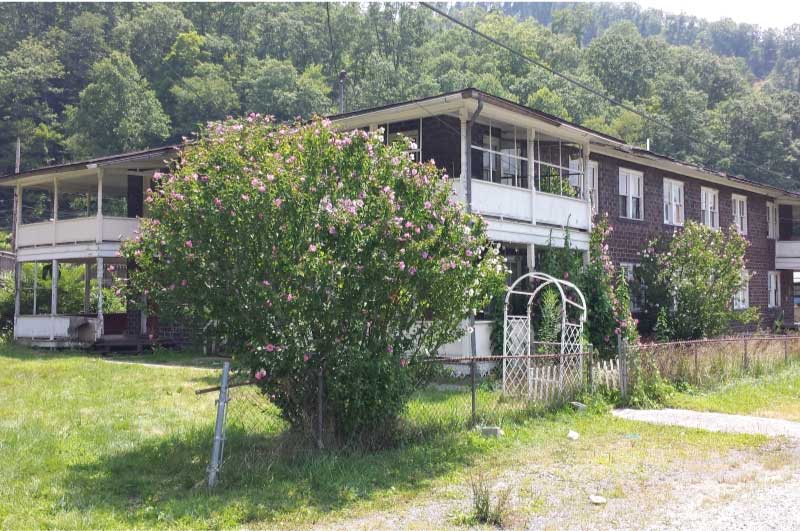
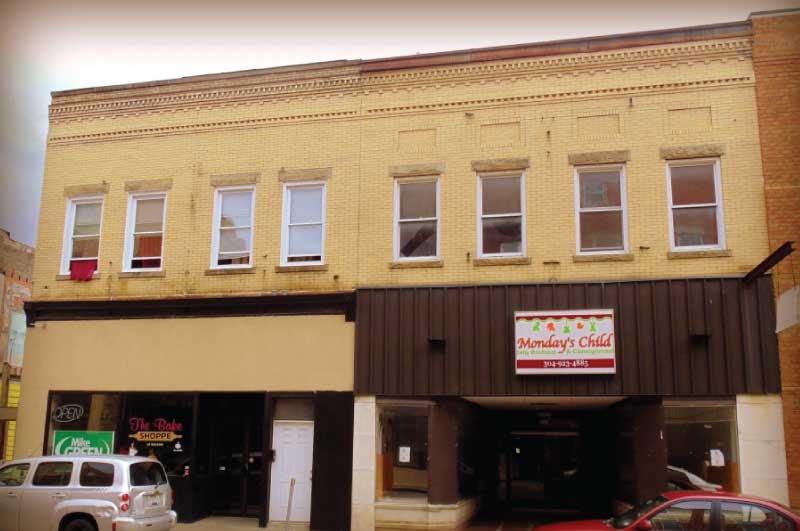
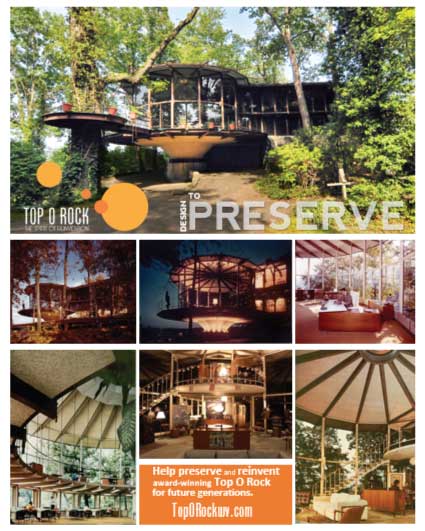
 RSS Feed
RSS Feed

